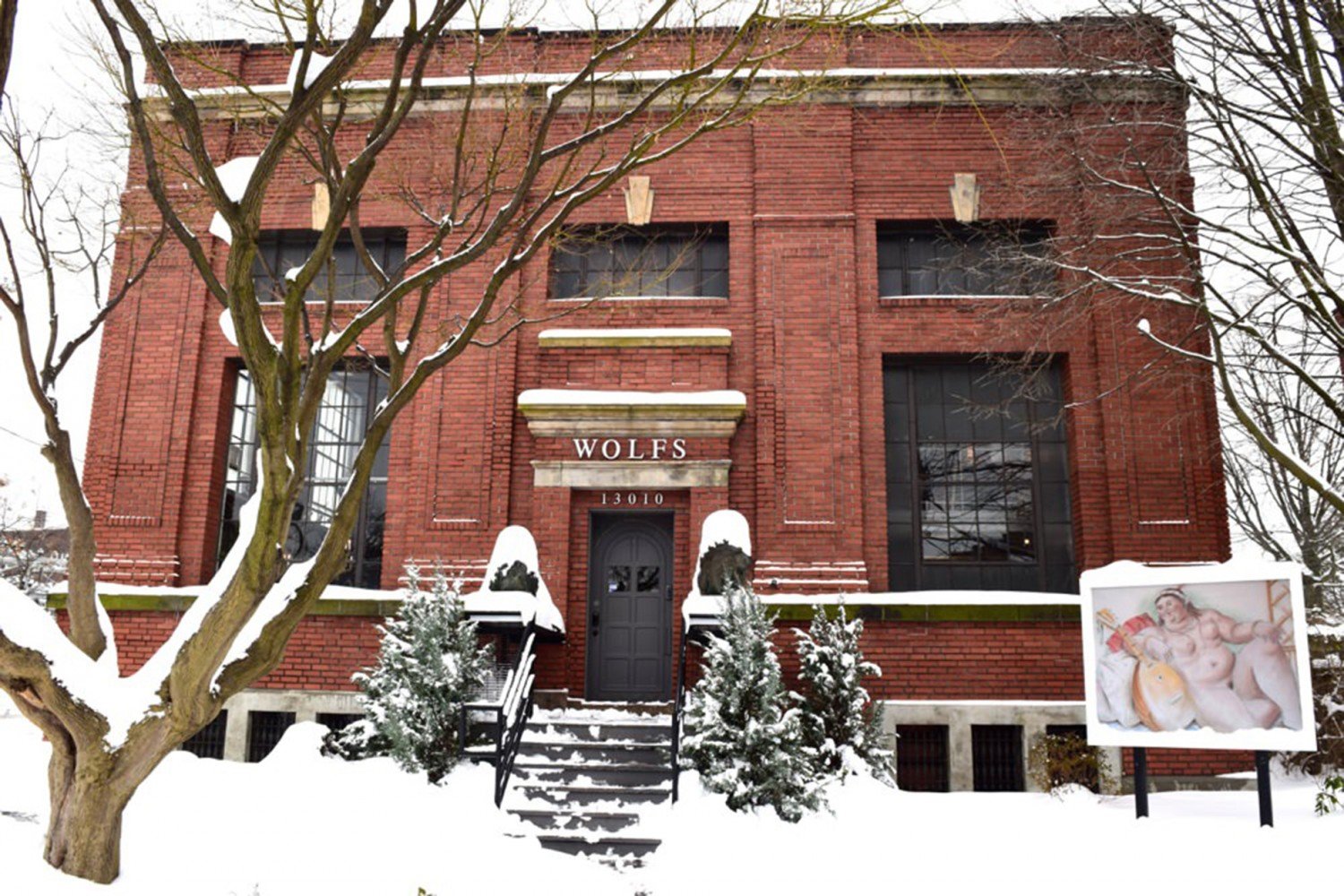
You’ve probably visited the Transformer Station, the Ohio City gallery housed in a former streetcar power station. But did you know there is another restored transformer station across town? This one is on Larchmere Boulevard, and it’s also filled with art. If you’ve never been to Wolfs Gallery, you should stop by – because this little building is filled to the brim with treasures.
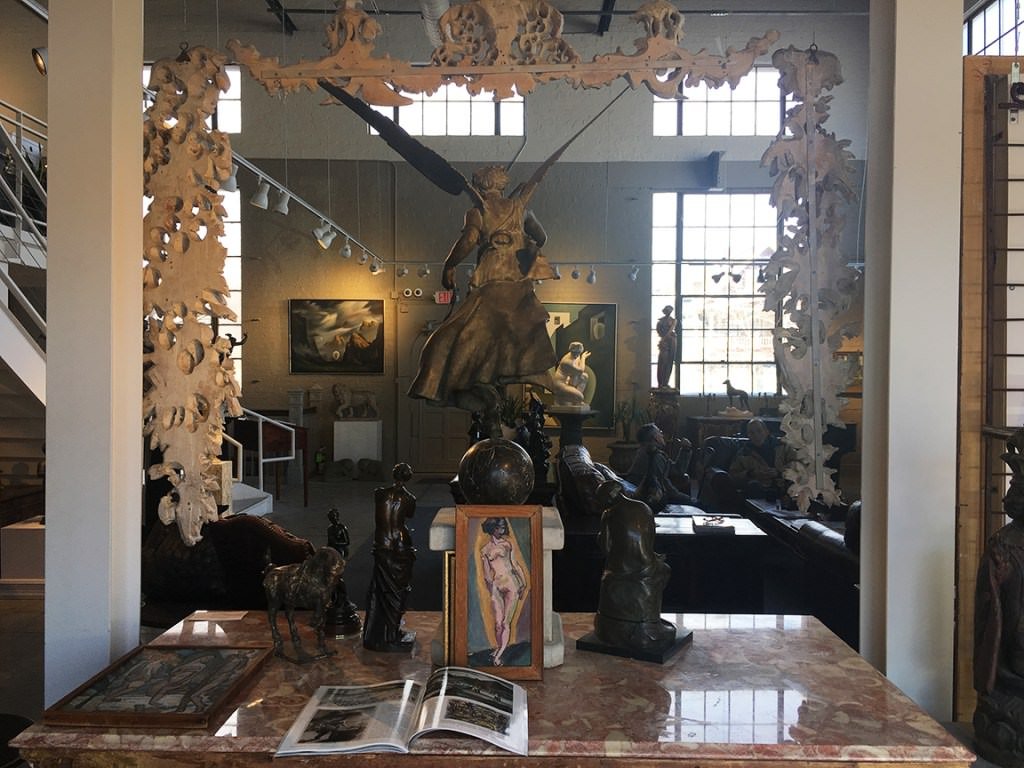
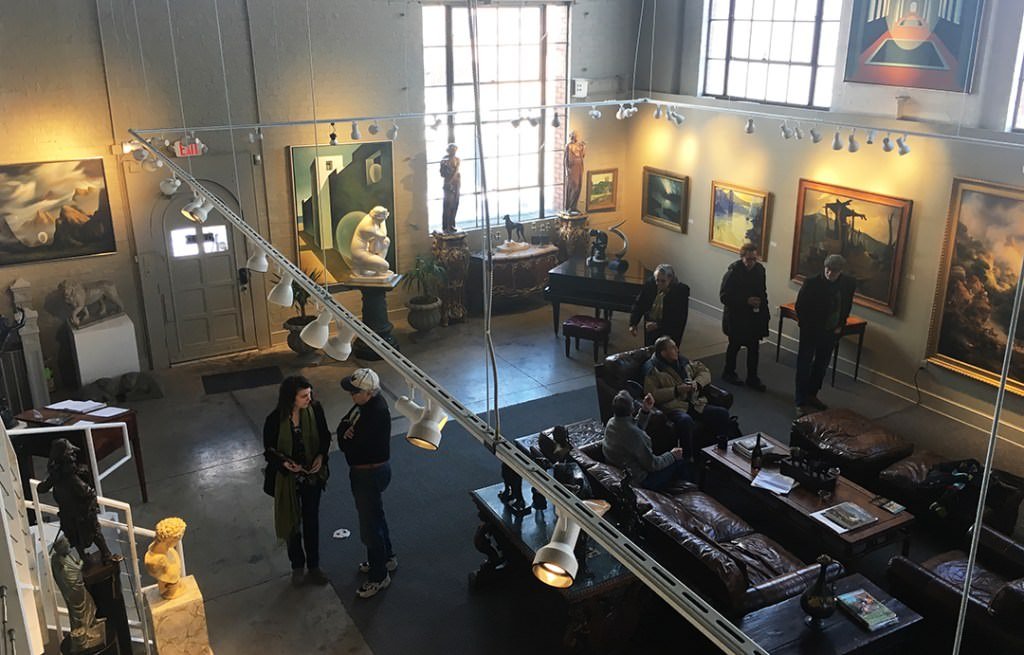
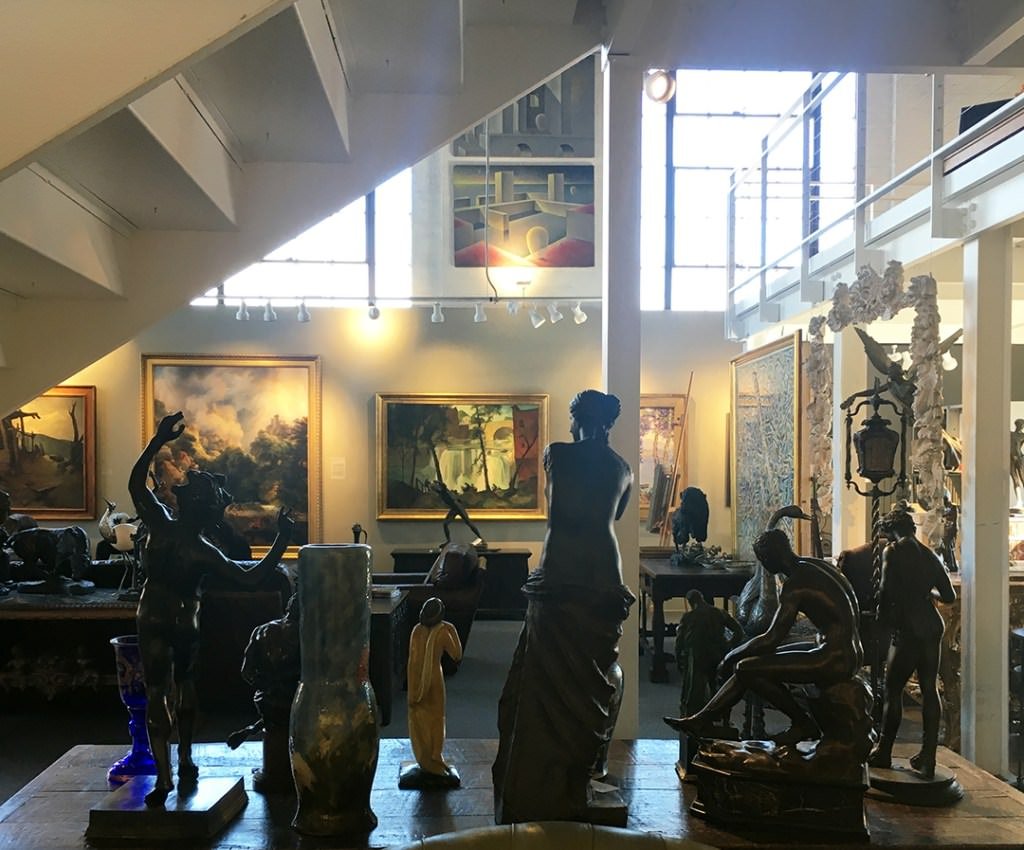
On a cold Saturday afternoon I wandered in, not quite knowing what to expect – and once inside, was surrounded with paintings, sculptures, objets d’art, and all manner of beautiful things, as sunlight streamed through the large industrial windows above. Wolfs is the namesake of Michael Wolf, who for years had a local auction house and is a well-known figure in the Cleveland art world – he moved the family business into the renovated power station in 2013. The space is packed to the gills with art, including up on the mezzanine level and in the basement. The staff are amazingly friendly, including Wolf himself – don’t be afraid to start up a conversation as you wander about – they are extremely knowledgable and will happily help you with any questions you may have.
Wolfs specializes in art from the so-called “Cleveland School” (check out this amazing painting of the Chagrin Falls from 1931, you can see it in the distance photo above), but you can also find museum-quality pieces from the 18th and 19th century, along with significant 20th-century works.
The star of the show in the upper galleries is probably their large collection of paintings and sculpture by New York School artist Joseph Glasco.
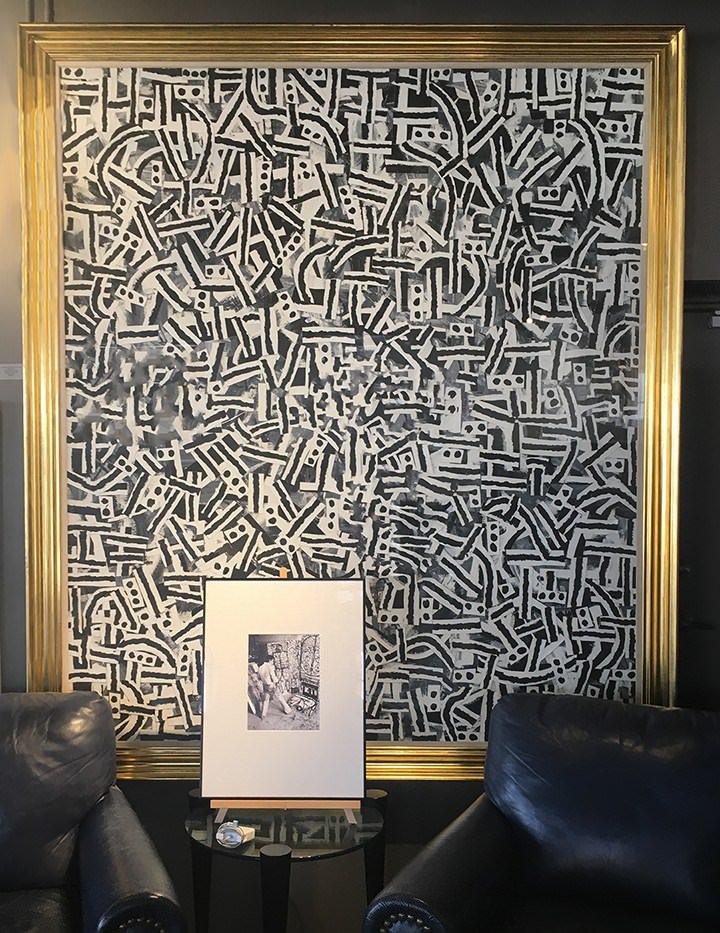
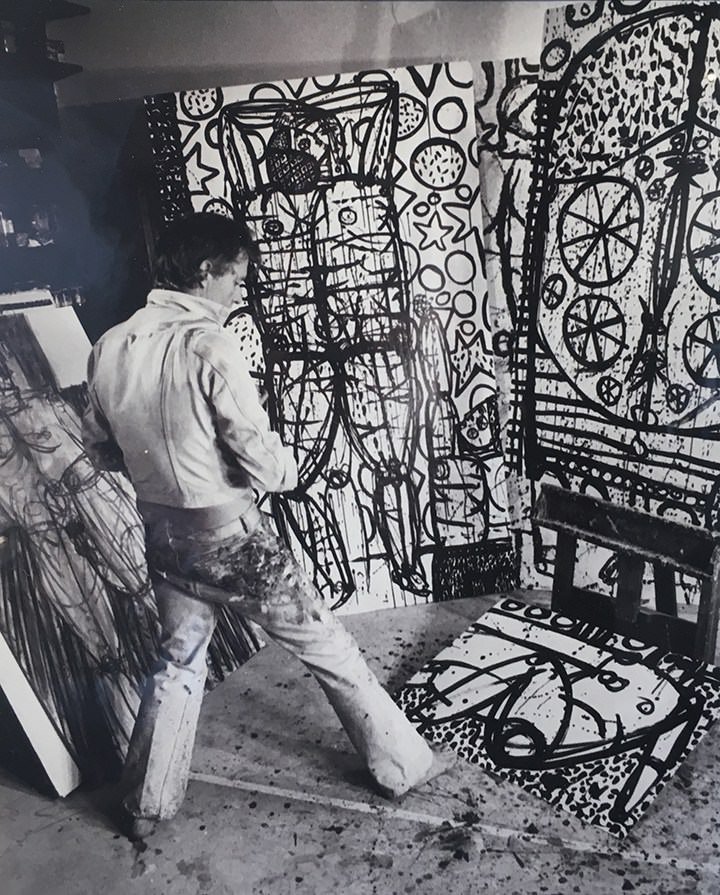
close-up of the matted photo seen above – Joseph Glasco in his studio
A contemporary and friend of Jackson Pollock, Glasco was a prominent figure in the Abstract Expressionist Movement at the midcentury in New York City (he was also the youngest artist to have a piece enter the collection of the Museum of Modern Art at age 24 in 1949). The gallery created this excellent ten-minute video about the artist, that I highly recommend watching: www.wolfsgallery.com/flims
Wolfs Gallery acquired the works from two important collections: the Late Stanley J. Seeger Jr. Collection and the David Chesler Collection mentioned in the video, and has representative examples from every stage of Glasco’s career – including large-scale abstracts from the 70’s, such as the black and white work “Untitled” (1978, above), and the colorful 9-foot tall canvas “Untitled No. 8” (1978, below).
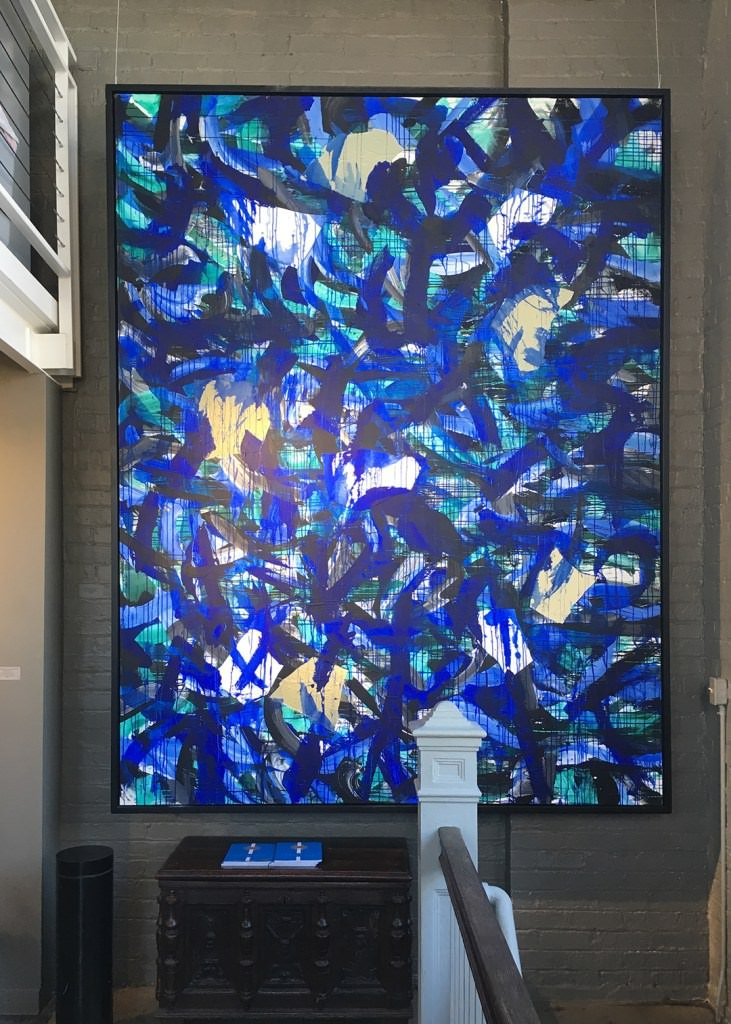
Close by was a great beach scene by Clarence Holbrook Carter (Riding the Surf, 1945), whose American Regionalist work I am familiar with – he was a well-known Cleveland artist, having graduated from the Cleveland Art School (which later became CIA) in 1927.
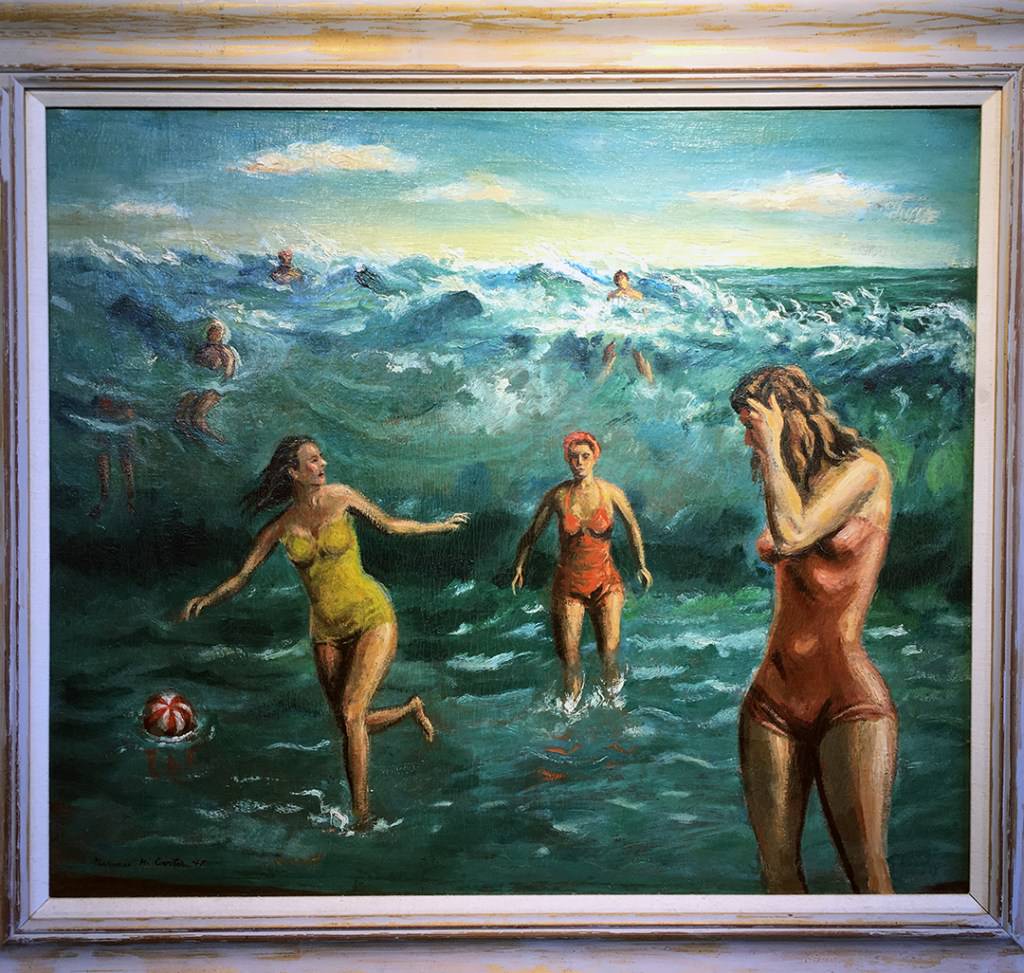
It was then that I ventured downstairs and found some seriously amazing treasures – including more Clarence Holbrook Carters than I even knew existed. The cavernous basement is chock-full of artworks – including an entire room overflowing with the estate of the aforementioned artist (don’t be afraid to go downstairs and take a look around).
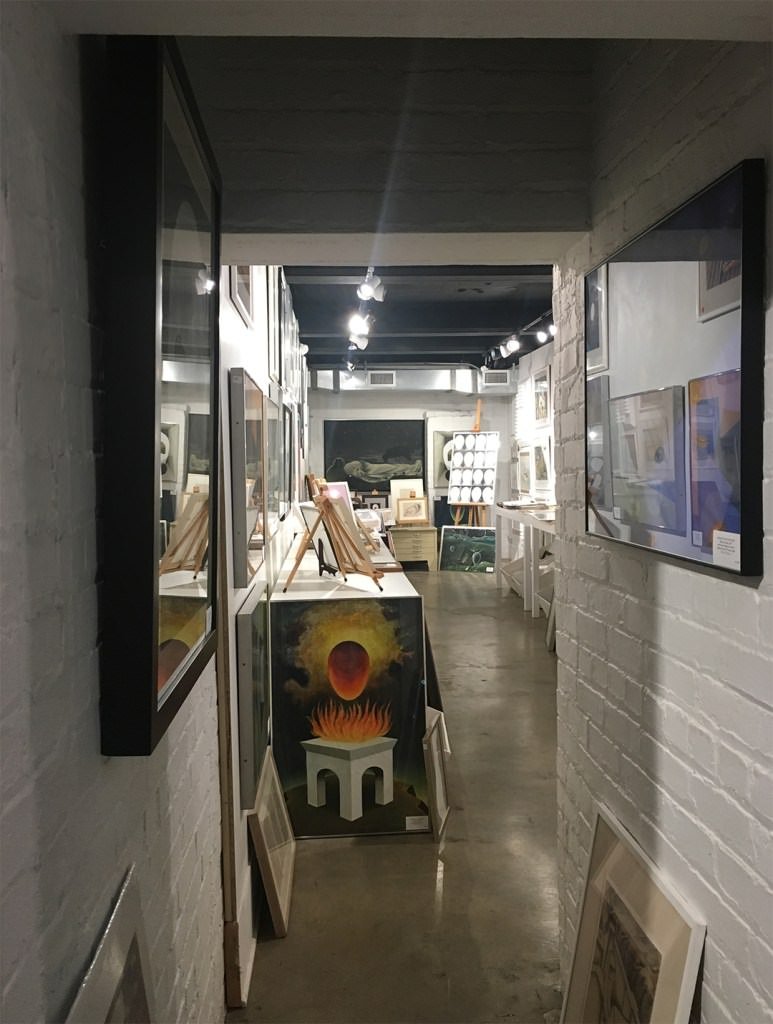
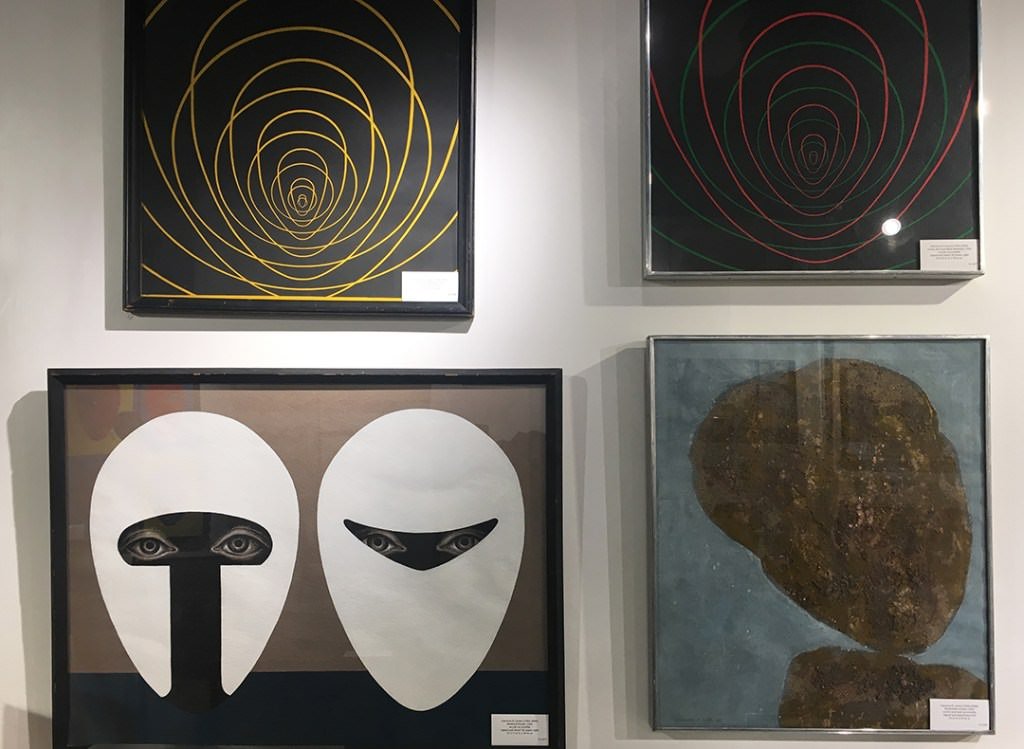
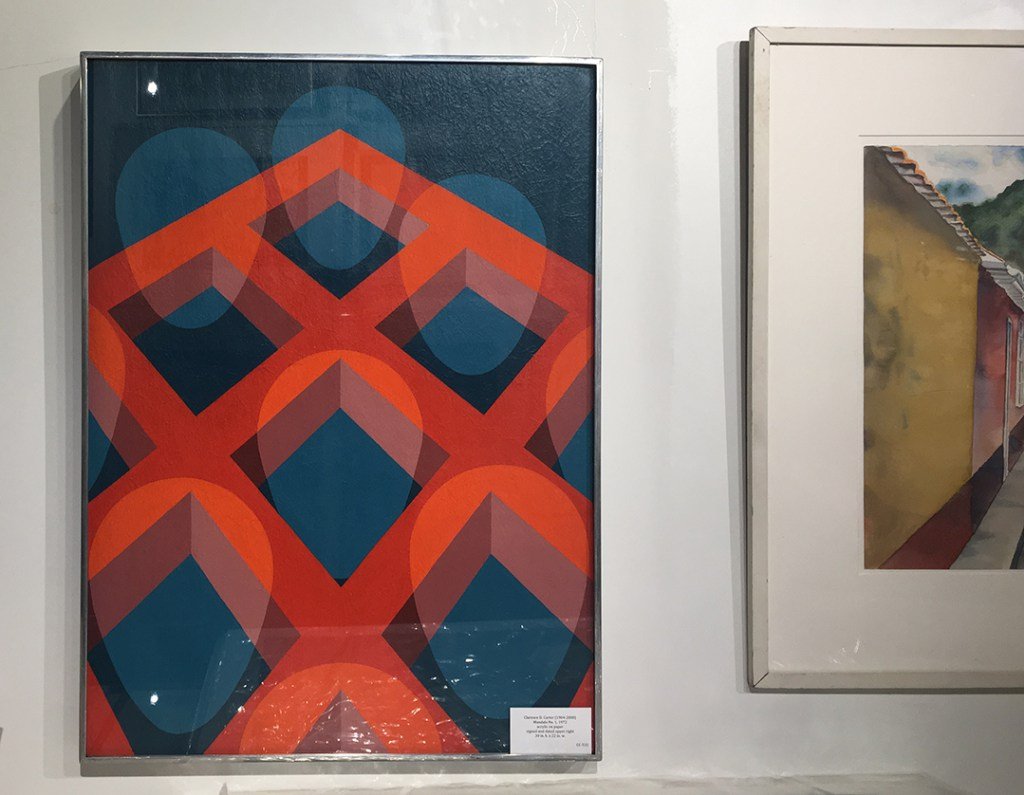
I wasn’t very familiar with Carter’s later work, and what a surprise it was. In the 1960’s, 70’s, and 80’s, Carter continued to make paintings, but in a very different style from his earlier realist compositions. As you can see, he became interested in deeply symbolic abstract compositions – many featuring egg-shaped forms that he referred to as ‘escatos’, which is Greek for “the last” or “final”. Towards the end of his life, there seems to be a decided turn to the contemplation of his mortality and the nature of the universe (be sure to read this fabulous article from the CAN Journal in 2015 on Carter’s stylistic shifts by Marianne Berardi here.)
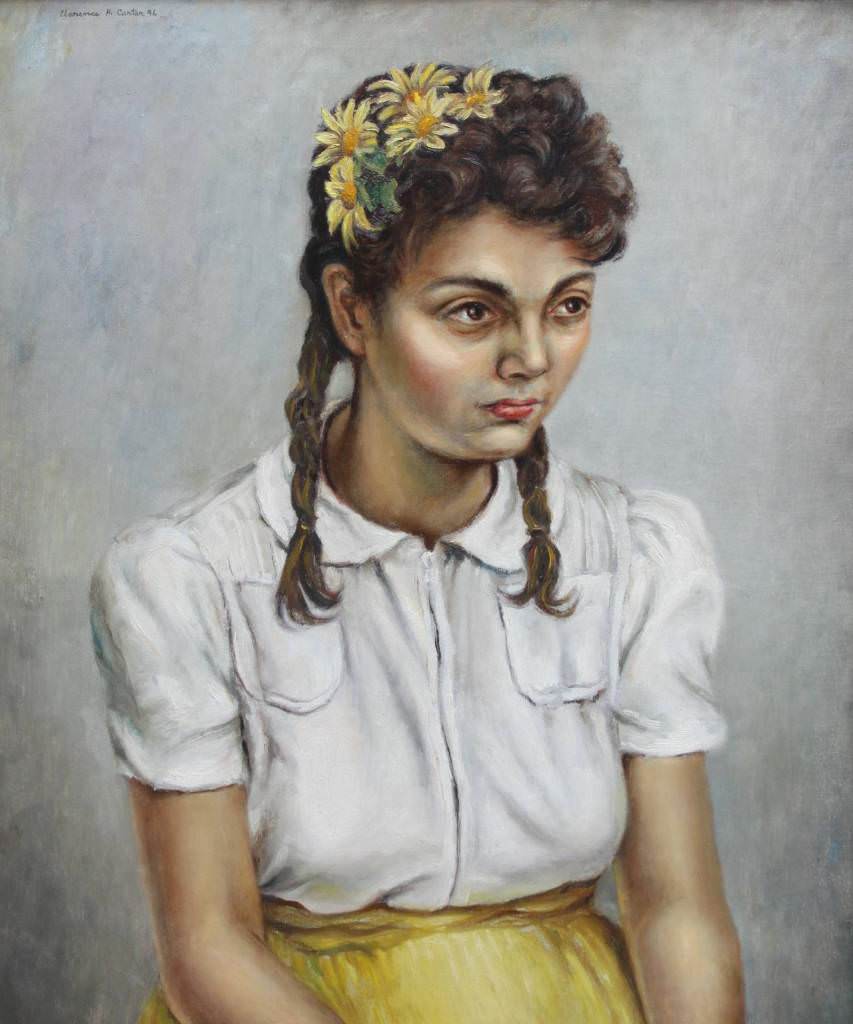
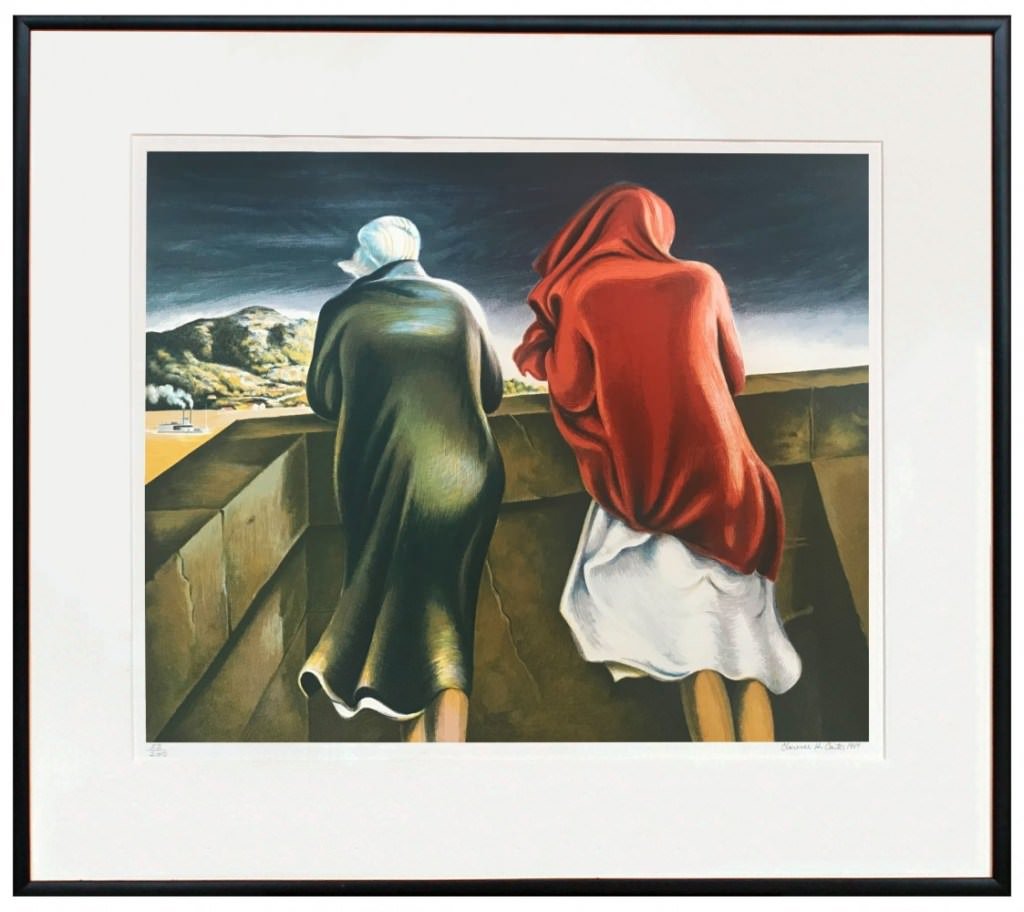
But there are many examples from all the periods of his career all over the place – such as the wonderful portrait above – Pensive Girl/Phyllis, 1941 – whose bored and slightly annoyed expression is delightful. There is also a stack – yes, a stack – of color lithographs found in an abandoned house, that were recently added to the collection. These prints, though made later, depict the composition of an early painting known as the The Flood (presumably now lost?). Two women are seen leaning on a ledge, looking out at the swollen Ohio River in Southern Ohio where Carter grew up. At the time he created it (1923), Carter was just a student, making ends meet by waiting tables in the tearoom of the Cleveland Museum of Art. The Flood won first place in the museum’s annual juried showcase of regional artists, “The May Show,” and secured the young artist’s reputation in the town.
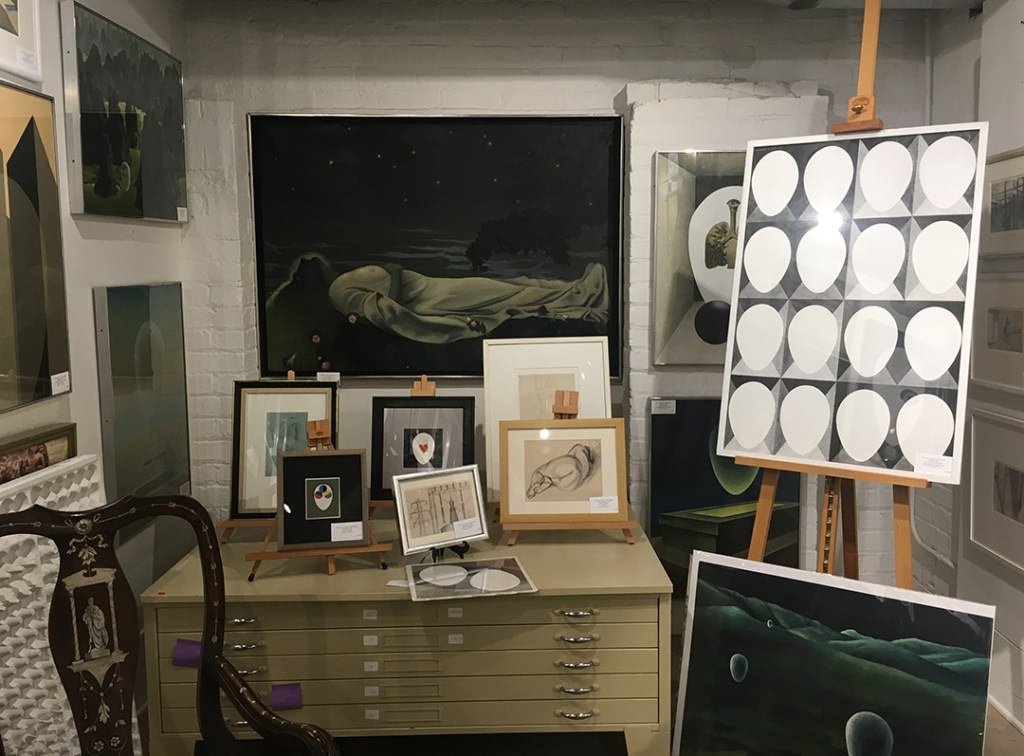
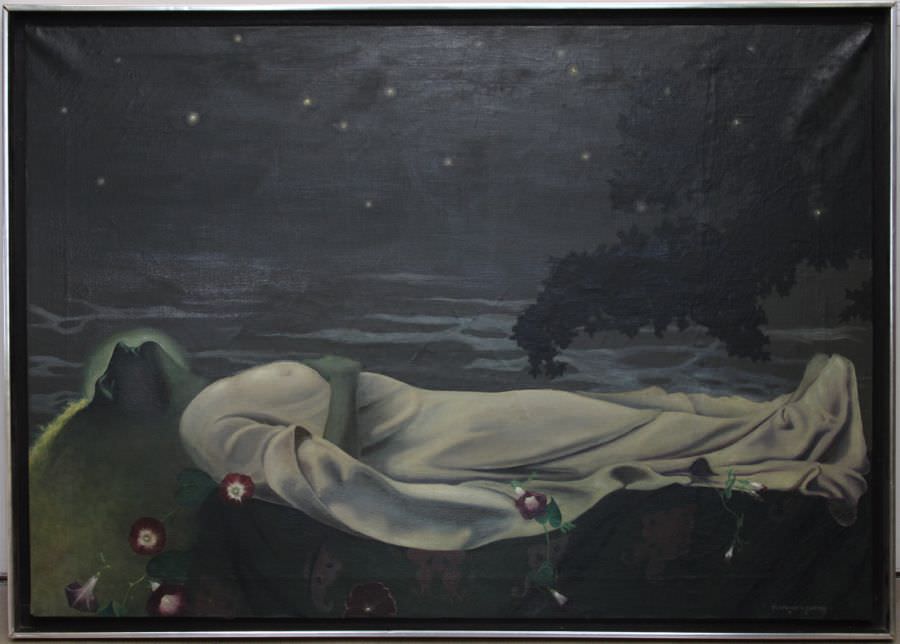
In the back of the room is a large canvas depicting a shroud-covered body, festooned with morning glories (a symbol of mortality), drifting against a night sky. Carter’s Lady of Shalott was painted in 1927 when he was 23 years old, and had just graduated from art school. The Arthurian subject of the tragic cursed woman was popular with artists such as John La Farge and the English Pre-Raphaelites. As you can see, death was a common theme for the artist, who apparently suffered an inordinate amount of loss as a young man. He recalls seeing his two younger sisters’ dead bodies, and his father abruptly had a heart attack and died in the young artist’s room, supposedly falling directly onto the fourteen year old’s bed. Despite these challenges, Carter lived to be 96 years old, and as you can see, was incredibly prolific throughout his lifetime.
Around the corner were even more surprises.
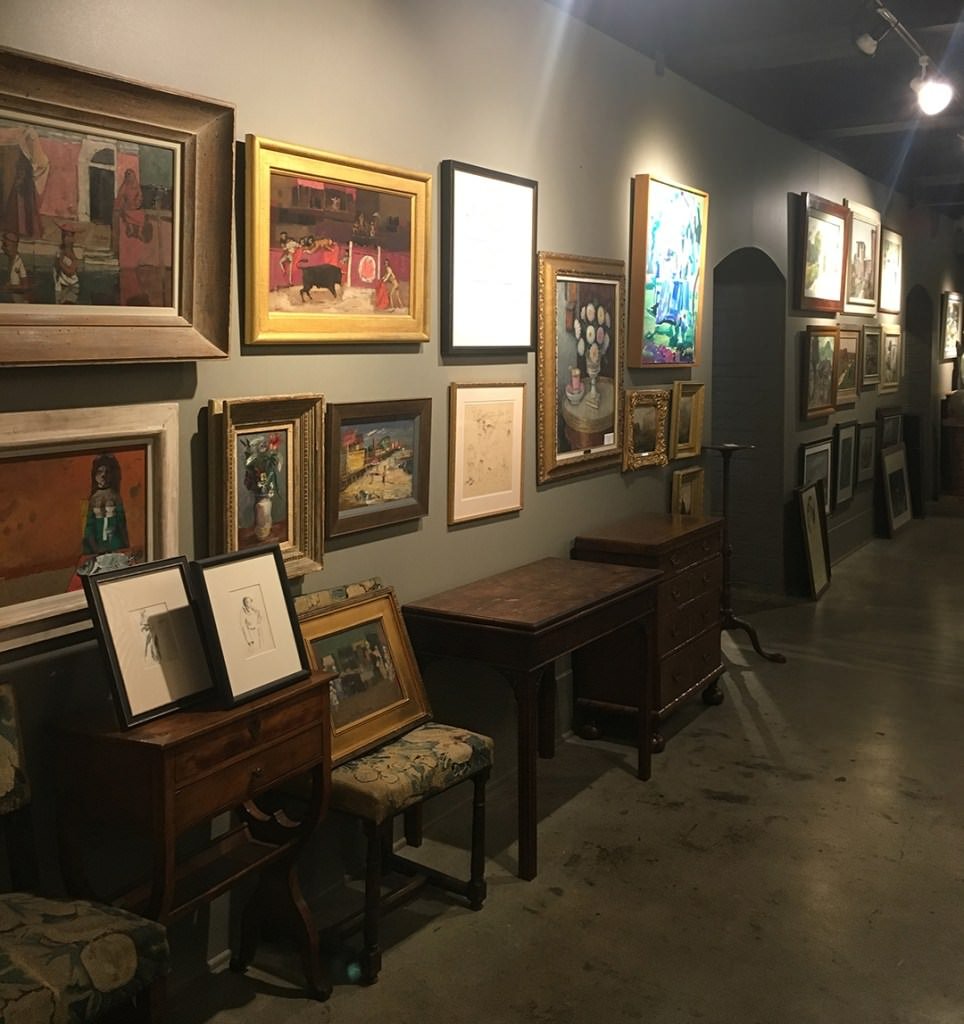
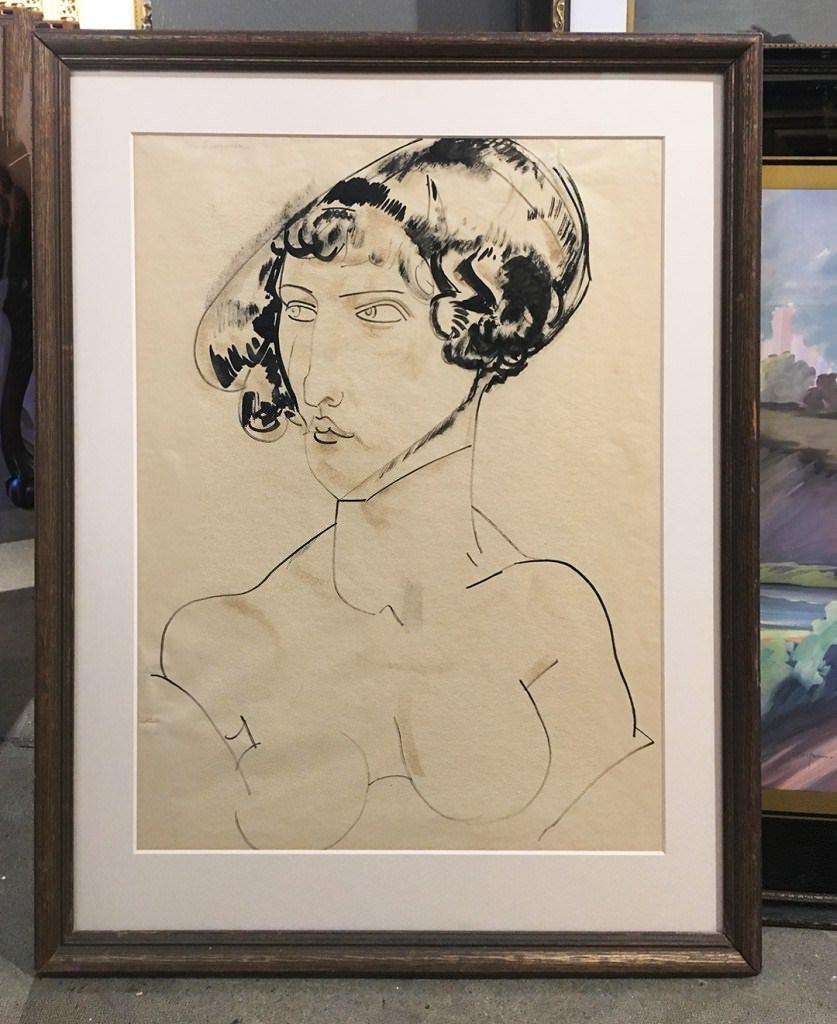
Amongst the many framed works along the hallway was this one (above), leaning against a chair. I was immediately drawn to this dramatically stern woman. On closer look, I could see the faint signature at top left: “Wm Sommer”. This is an ink portrait on paper made around 1920 by William Sommer, a significant figure in the history of modernism in Cleveland. Sommer moved to the area in 1907 to work for a commercial lithographer, but had aspirations of being an avant-grade artist. Sommer was determined to make art in a new, modern style, especially after seeing the historic Armory Show in New York in 1913. The exhibition featured the work of Post-Impressionist European artists who were basically unknown in America, such as Van Gogh, Gauguin, Cezanne, Picasso, Matisse, and Duchamp. Inspired by what he saw, Sommer co-founded the infamous Kokoon Arts Club to promote modern art in Cleveland. The Kokoon Club’s annual mega-parties, the Bal-Masque Balls, were notorious for their debauchery.
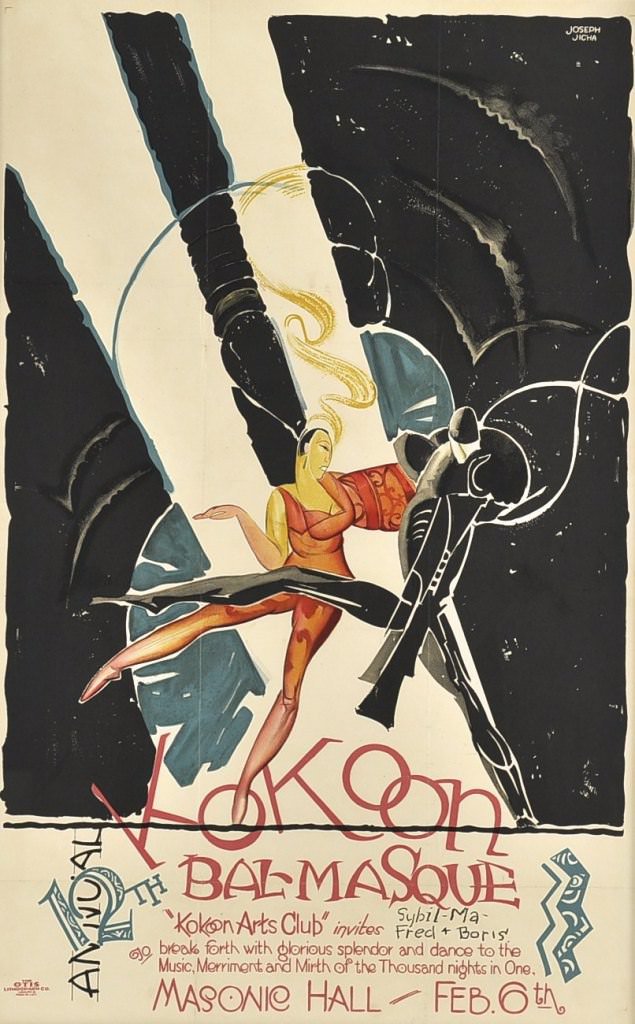
Joseph W. Jicha, Kokoon Arts Club Bal Masque Invitation, 1925
The members of the Kokoon Club scandalized conservative Clevelanders with their risqué parties and provocative art – they were sometimes pejoratively referred to as the “Cocaine Club”. The drawing by Sommer at Wolfs Gallery reflects the aesthetics of that time – the angular forms even echo the early work of Picasso. The nude woman with a bobbed hairstyle and determined stare certainly fits into this milieu of strong-willed “young moderns” – I can picture her smoking a “jazz cigarette” at one of their riotous parties.
Moving into the next room, my gaze was drawn to another portrait of a woman – albeit a bit different. This is a lovely nineteenth-century painting in an elaborate gilt frame, hanging on the rear wall of the basement.
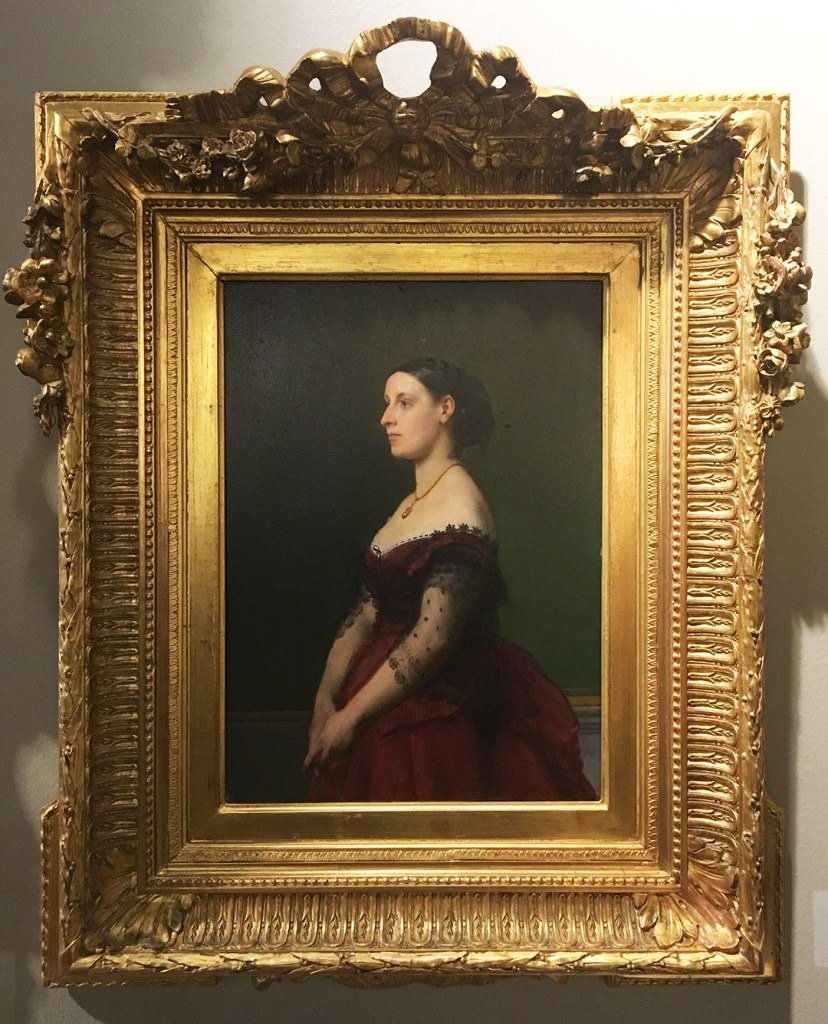
I was drawn to the delicate use of light and attention to detail, especially the way the woman clasps her fingers, almost anxiously.
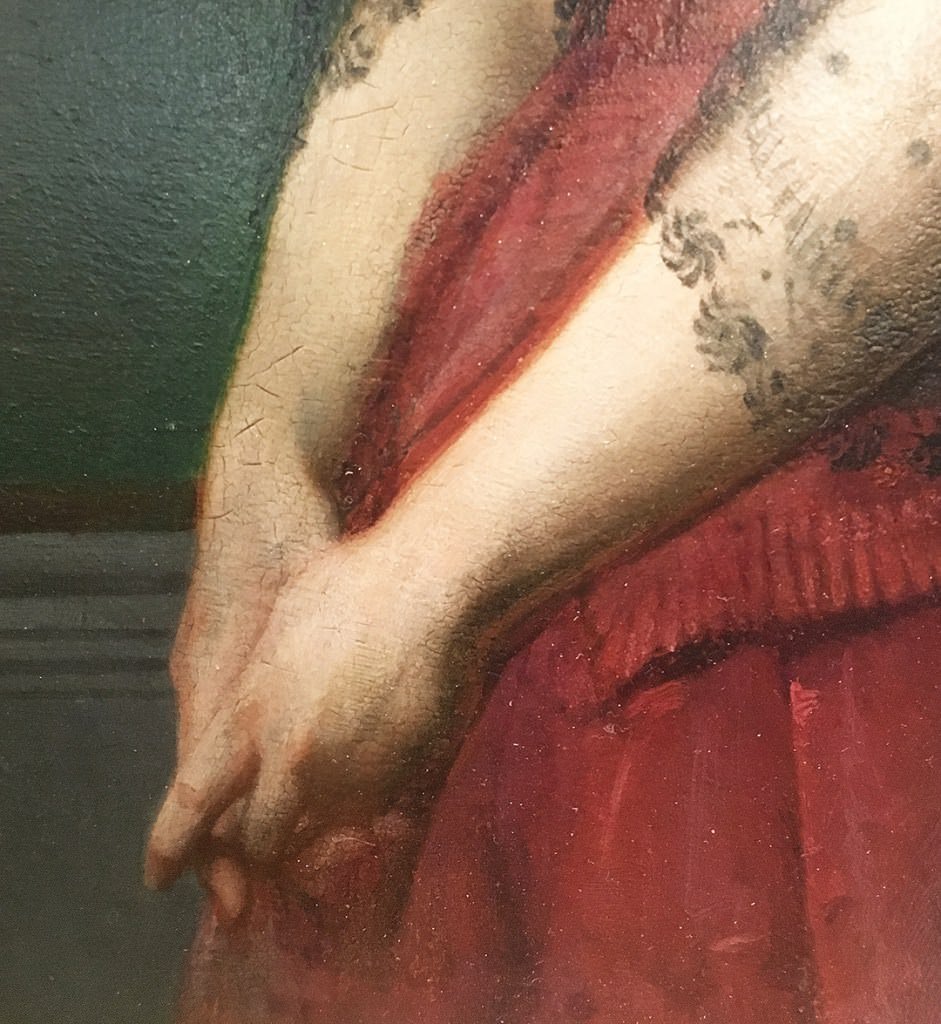
Gorgeous details abound in this small canvas by French artist “Tony” Robert-Fleury. The name was familiar, but I couldn’t place it at the time – it wasn’t until I looked him up later that I recalled how I knew the name. This picture was made by the very same Robert-Fleury who was an illustrious teacher at the Academie Julian in Paris in the late 1800’s. Known for his suave manner and good looks, Robert-Fleury taught many famous women artists such as Rosa Bonheur and Celia Beaux (it’s no coincidence that this well-known playboy was in charge of the women’s atelier). He was also extremely well-connected – his father was a famous painter, the director of the École des Beaux-Arts, as well as a juror for the annual Paris Salon Exhibitions, which certainly helped advance the young man’s career.
The canvas at Wolfs was painted in 1868, only two years before Robert-Fleury’s biggest success: in 1870 the painting he submitted to the Paris Salon won First Prize, and was immediately purchased by the Musee du Luxembourg. The painting in question, the Last Days of Corinth, was an ostentatious depiction of the aftermath of a classical battle, featuring scantily clad voluptuous women (it’s now on display at the Musee d’Orsay). Robert-Fleury was known for painting bombastic historical scenes such as this, usually massacres, with weeping women and black smoke. His over-the-top paintings delighted the jurors and crowds alike.
That’s why the quiet portrait at Wolfs is so wonderful – it is understated. I can actually imagine the woman posing for the painting, her fingers twisting somewhat nervously – perhaps because she was posing for such a handsome, well-known artist. This is a truly sensitive portrayal of a modern woman, but probably owes more to Robert-Fleury’s skills as an observer of women than to his academic training. It’s a stunner.
As you work your way around Wolfs, it’s easy to forget that all of these treasures are actually for sale, and could potentially be hanging in your living room later. Some of the pieces have priced listed, others don’t – if you’re curious, don’t be afraid to ask a staff member for a price – you might just be surprised. But even if you’re not shopping, stop by. It’s worth it.
WOLFS is located at 13010 Larchmere Boulevard, and is open Wednesday through Saturday, 11am–5pm.
CAN Journal - Brittany M. Hudak
